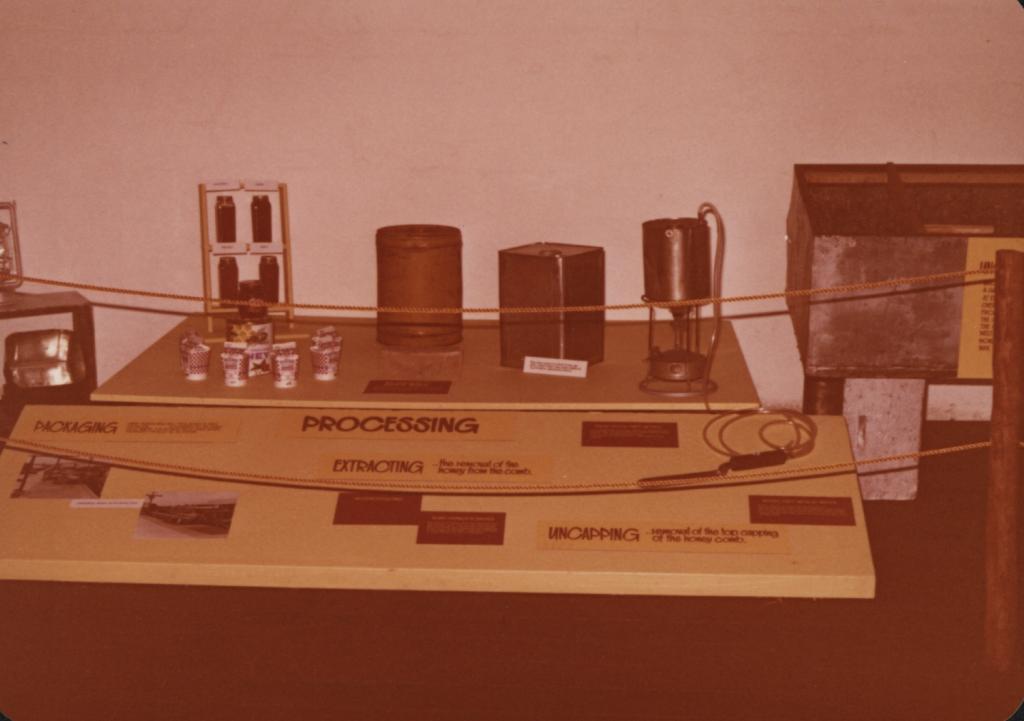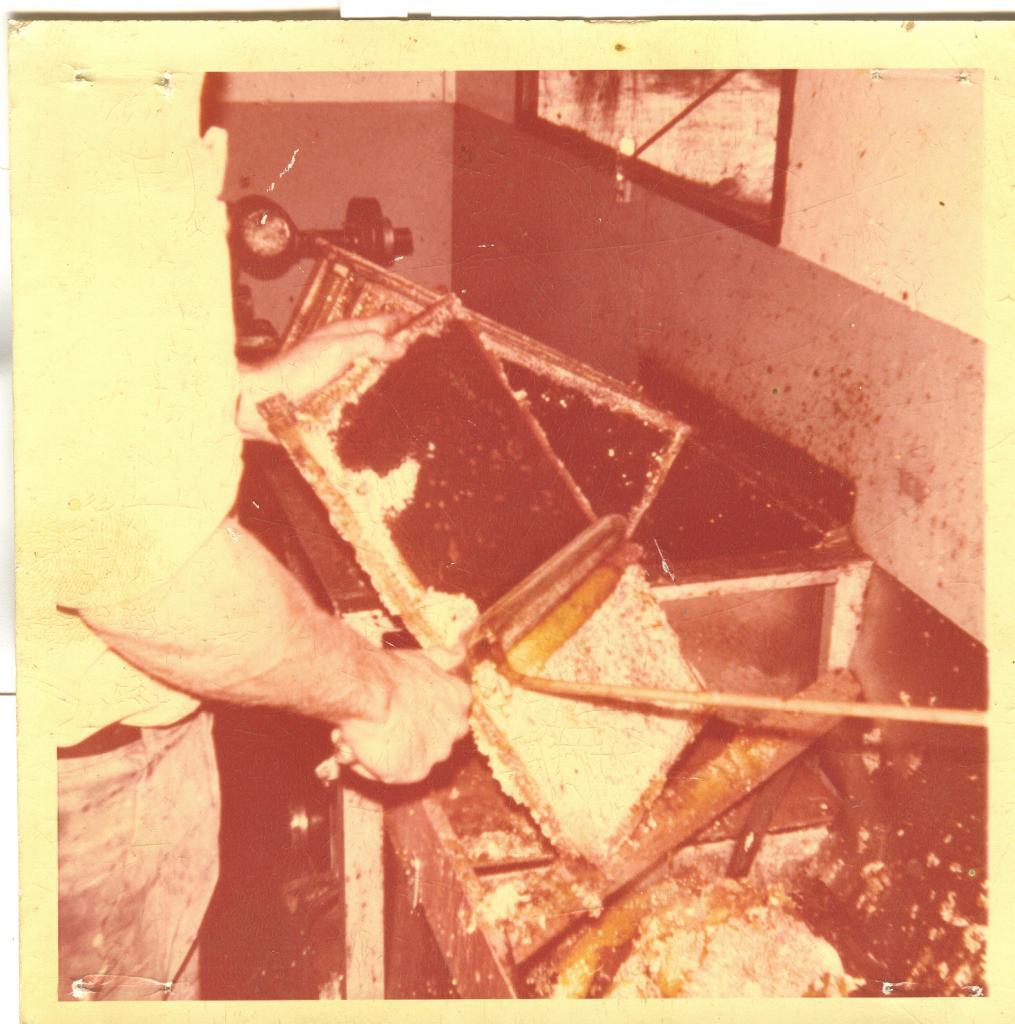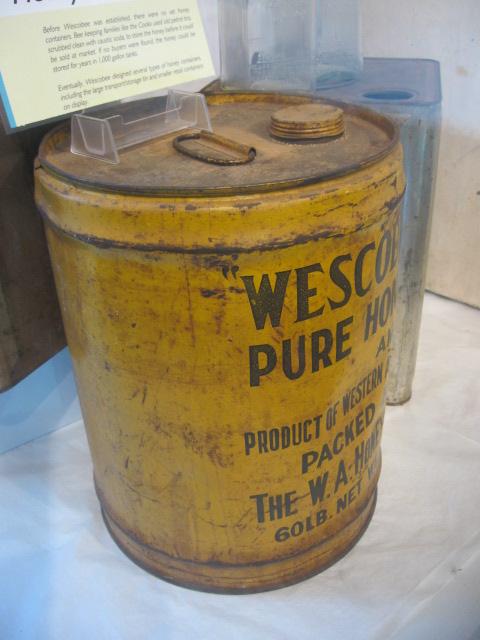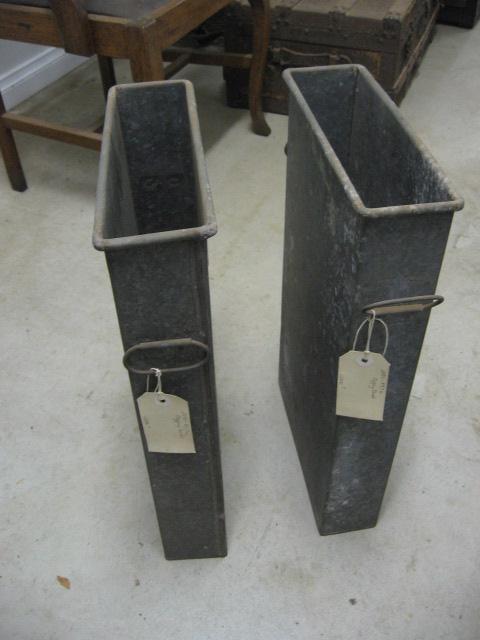Beekeeping and the Cook family of Toodyay, Western Australia, 1920s-1950s
In the 1890s, Arthur Cook moved to the Toodyay district from New South Wales and established an apiary, planted an orchard and took up mixed farming. In 1903, his brother, Samuel, joined him until he was granted his own 160-acre homestead block of natural bush, not far from the Coondle railway siding.
In 1914, Samuel married Margaret Britt. Five sons were born; the first arrived in 1916 and was named Samuel Charles Cook. The apiary business expanded into a large and flourishing enterprise.
Samuel Cook snr. died in 1942, at the age of 60. His son Samuel jnr., with the help of his younger brothers - William, Harry, Sydney, and Geoffrey - continued his father’s beekeeping business.
Samuel Charles Cook was interviewed in 1994 and his memories were recorded as an oral history which is now held in the heritage collections of the Shire of Toodyay and the Toodyay Historical Society. This article is based on Sam’s 1994 oral history and includes audio excerpts.
The full interview can be found here: https://collectionswa.net.au/items/33ba96cc-a230-4059-bf69-2e9a09ffcfc5
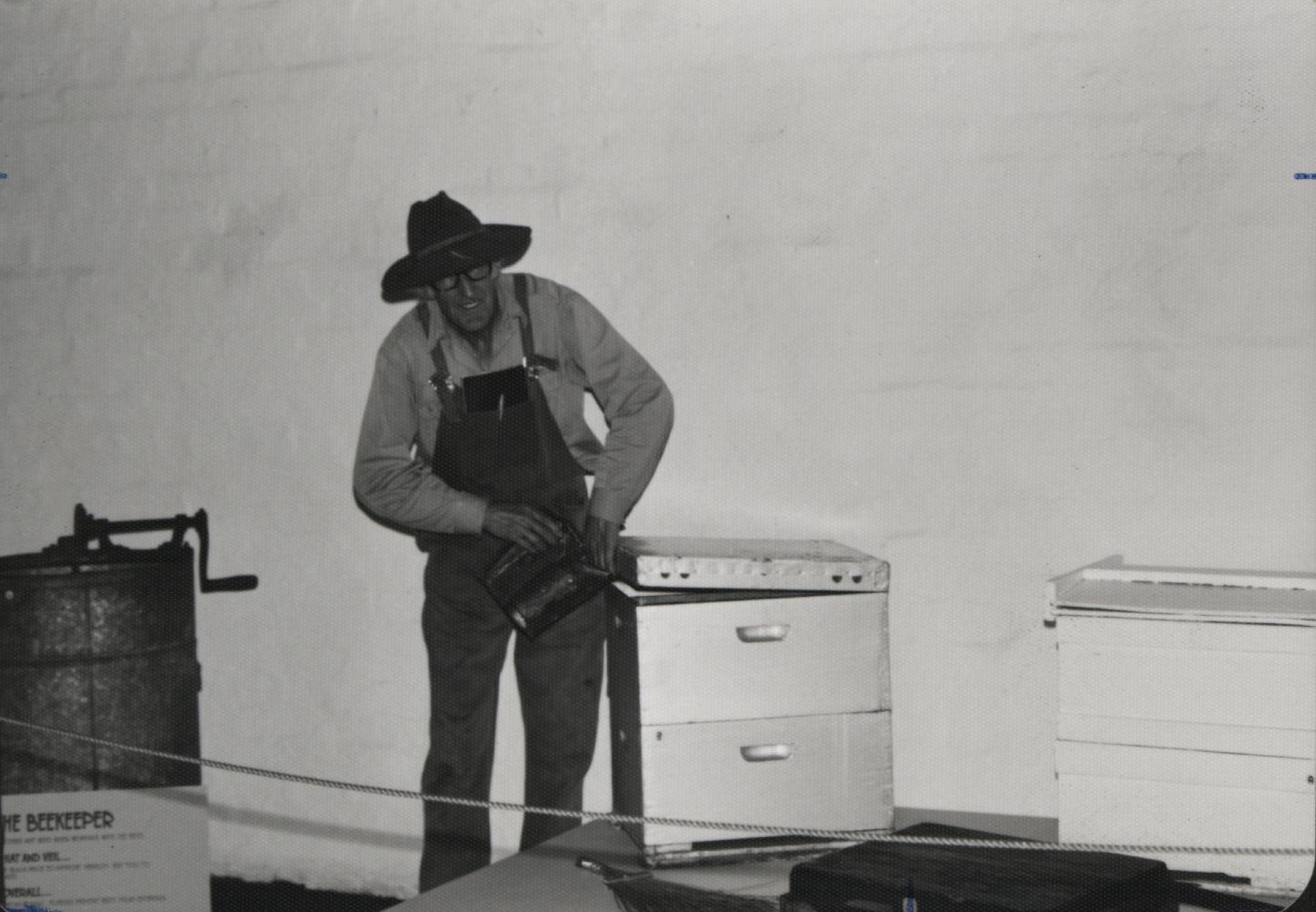
Samuel Charles Cook demonstrating bee smoking, Connor's Mill display c1980
Stationary beekeeping
The Cook family property location was chosen mainly for its fine stands of Marri timber and its proximity to virgin forest country further to the west, particularly along the northern section of the Julimar Brook.
The forest species also included Wandoo and Jarrah and were found throughout the agricultural areas of the Toodyay district. The combination provided good scope for securing splendid crops of honey.

Cook family apiary, from The Story of Toodyay by Alf Thomas (1949), p.53
In the early years, the hives were located close to the family residence. A “honey house” was built nearby to process the honey from the hives.
Relocation of a few hives
A decision was made to move some of the hives to new locations around the Coondle district. This was done to take advantage of the various flowering periods of species further away from the homestead.
Initially, around eight hives were moved by horse and spring cart.
Moving more hives into the Julimar Forest
By the early 1920s, hives were being transported into the Julimar forest about 13 kilometres north-west from the homestead block. The hives were still close enough to transport, set up and return within a day.
Later, a lorry drawn by two horses was used to carry 40 hives further into the Julimar forest, up to 24 kilometres away.
In 1929, a Chevrolet truck was purchased by Sam Cook snr. which made travelling down steep hills much safer and took away the worry of the horses being stung. The truck had an open cab and a flat tray to hold the hives.
With the advent of the motor car, there was a need for petrol. It was packaged in four-gallon tins which could be reused for the storage of honey.
Wood from the cases, in which the petrol tins had been transported, was used for the manufacture of hives.
hive including base, lid and frames with foundation sheets, Connor's Mill display
Large-scale migratory beekeeping
In 1935, Arthur Cook decided to take a collection of hives down south to the Karri forests around Manjimup. The Karri was reputed to yield a tremendous amount of honey and Karri honey was sought after by buyers because of its high quality and taste.
Sam jnr. accompanied his Uncle Arthur on that first trip; an all-night journey of around 385 kilometres.
This first long-distance migration proved a great success. It was a time of adaption and innovation. Other apiarists followed and the production of honey soared across the State.
“Different sort of forests, different terrain and different climate. Everything was different!” (Sam Cook jnr. 1994)
In 1940, Samuel Cook snr. purchased a Ford V8 truck from a Perth dealership. His son, Samuel collected it and delivered it to a body builder to have it modified for carrying hives. The Cook family operation had expanded into an era of large-scale migratory beekeeping; to the southern Karri forests around Manjimup and Kojonup, to Dongara and across to the Mallee country east of Ongerup.
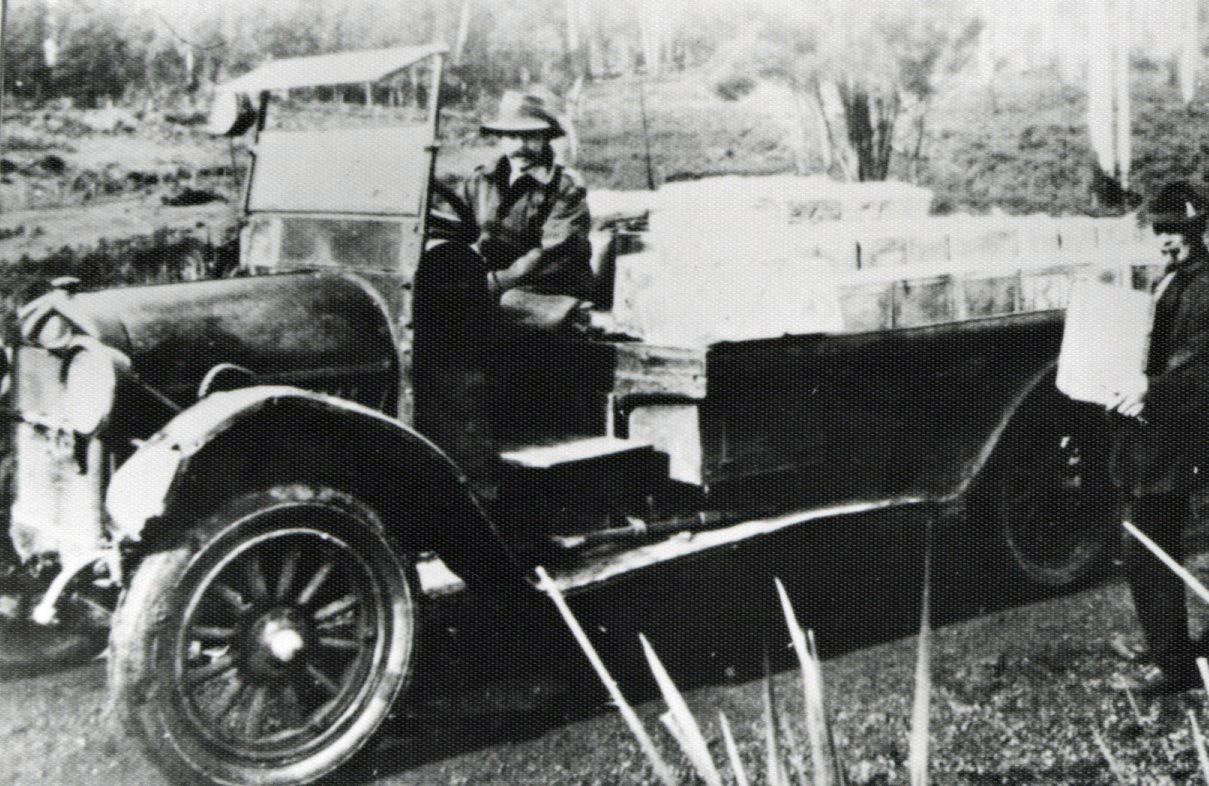
transporting honey, unknown date or subjects
(digitally edited image of Shire of Toodyay photograph 2001.1266)
During World War Two (1939-1945), petrol was rationed which impacted the operation of vehicles and machinery.
Petrol rationing in Western Australia continued until 1949.
By 1942, (the year of Sam Cook snr.’s death) the Cook family managed more than 1,000 hives. The migratory hive sites established across the state’s forests required close supervision to protect the hives from pests and diseases.
Harvesting the honey typically involved several days camping at each bush site where the hives had been placed. Food and water had to be brought in.
All the harvesting equipment had to be transported to each site.
One of the tasks involved in harvesting was “uncapping” the hives. Uncapping is the process by which the thin layer of beeswax is removed, exposing honey frames for honey harvesting.
The cold southern forests posed problems when working with the honey. Sam Cook jnr. remembers, “It was not unusual on arising in the morning, after a very cold night, to find ice crystals on the hive lids.”
Around 1941, a new device named an uncapping reducer made things easier in the colder weather.
Marketing
Arthur Cook and his brother Sam snr. had been instrumental in the establishment of the Honey Pool of Western Australia. It was established in 1926 as a co-operative scheme to collectively market honey from Western Australian beekeepers.
Over the years, the selling price of honey varied.
The 1935-37 years were extremely good for honey production and there was a glut. For a while the Honey Pool was unable to accept more honey for market, and honey being harvested by the Cooks was stored at their property. Just prior to World War Two, however, the export market to the United Kingdom for Western Australian honey opened up.
Honey was delivered to Perth for storage and packing for export by the Honey Pool.
The brand name marketed by the Honey Pool was Wescobee, which was coined from the words: Western Australian Co-operative Beekeepers.
A by-product of the harvesting of honey was beeswax.
Innovations
The Cooks were open to testing new methods of transporting and managing hives they had heard about from beekeepers in other Australian states.
Some trials were more successful than others.
Another innovation was the mobile extracting caravan, introduced to the Cook family operations in around 1948.
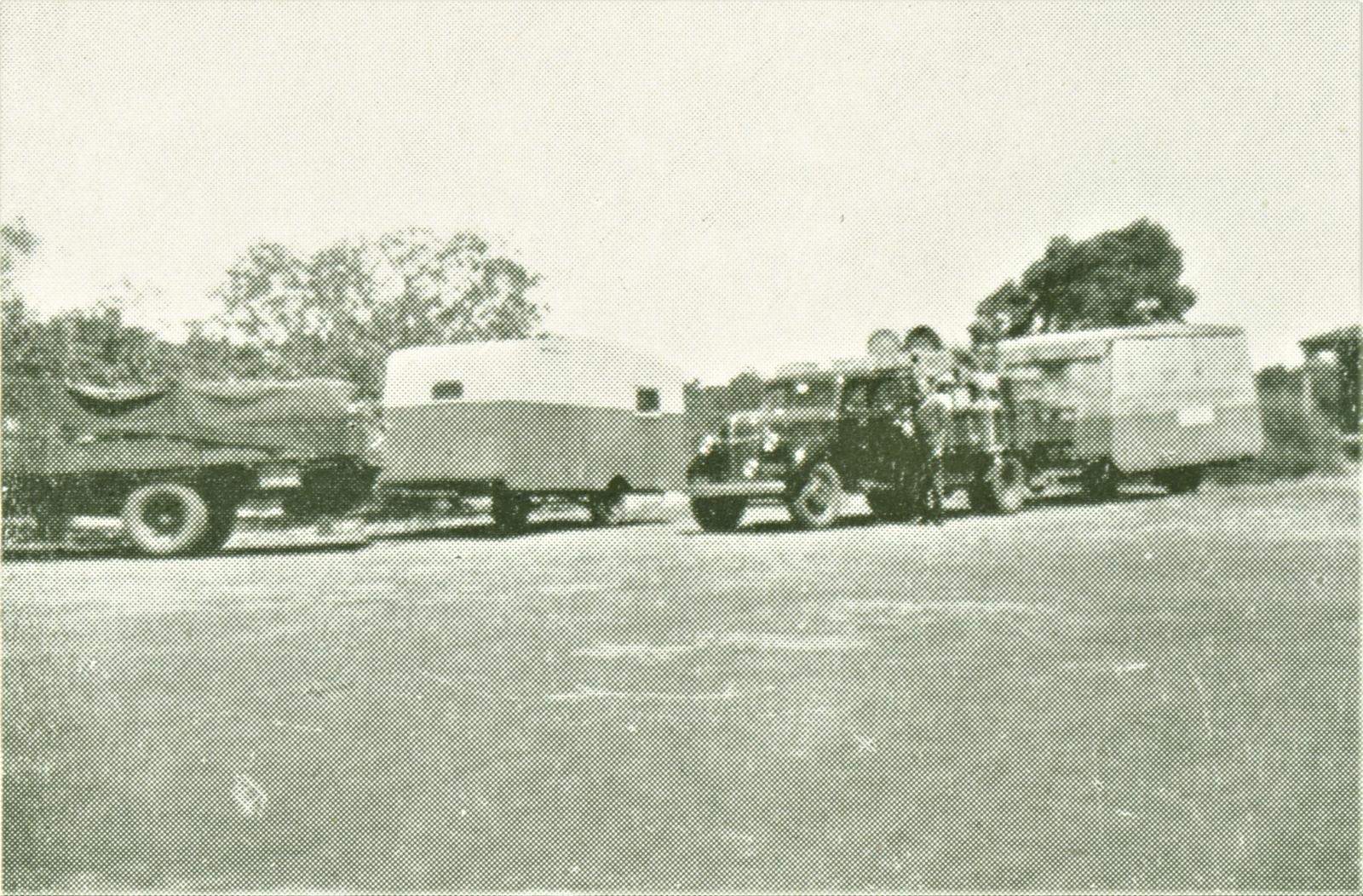
mobile extracting caravans, from The Story of Toodyay by Alf Thomas (1949), p.53
In 1948, Sam married Joan Lord. They moved to Manjimup and continued working in the family beekeeping business. In 1951, they moved back to Toodyay.
Sam decided to go out on his own with beekeeping in 1956.
In later years, Sam shared the story of Toodyay beekeeping through the donation of historic equipment to the heritage collections of the Shire of Toodyay, and by contributing to early displays inside Connor’s Mill.
Updated displays in Connor’s Mill today continue to tell of the legacy of the Cook family.
Sam Cook jnr. died on 31 July 2003, aged 87.
His memorial is located in the Toodyay Public Cemetery.
